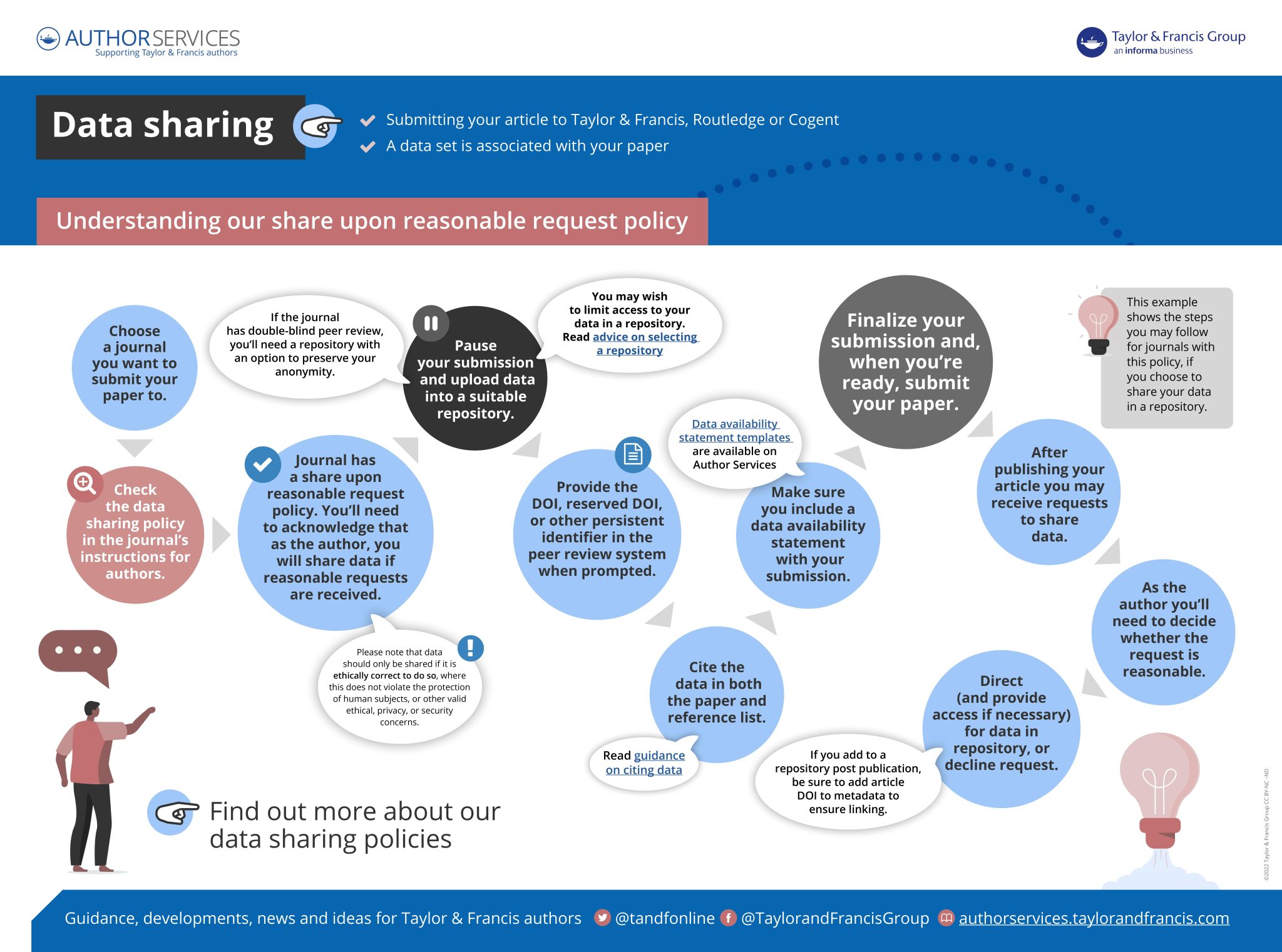Share upon reasonable request data sharing policy
Information for authors
Many Taylor & Francis journals have policies on data sharing which state how data associated with your article should be shared.
The following describes our share upon reasonable request data sharing policy. If you’re an author submitting to a journal with this policy, you’ll need to pay close attention to these instructions.

Publishing tips, direct to your inbox
Expert tips and guidance on getting published and maximizing the impact of your research. Register now for weekly insights direct to your inbox.
Quick links
About this policy
Authors agree to make data and materials supporting the results or analyses presented in their paper available upon reasonable request. It is up to the author to determine whether a request is reasonable.

Please note that data should only be shared if it is ethically correct to do so, where this does not violate the protection of human subjects, or other valid ethical, privacy, or security concerns.
Depositing data
Authors are required to respond to data sharing requests in association with their paper following publication.
We recommend authors deposit data in a recognized data repository before submission. This can facilitate the ease of sharing on receipt of requests (which could be months or years after publication). We recommend choosing a repository that can mint a persistent digital identifier, such as a digital object identifier (DOI). It should also recognise a long-term preservation plan.
We highly encourage researchers to consider the FAIR Data Principles when depositing data. We further advise researchers to use FAIRsharing and re3data.org to search for a suitable repository. These both provide a list of certified data repositories.

Data availability statement (DAS)

Authors are required to provide a data availability statement, detailing where data associated with a paper can be found and how it can be accessed. The DAS should be submitted within the article manuscript, before the ‘References’ section. If data cannot be made open, authors should state why in the data availability statement. Read our guides and templates to help you prepare your data availability statement.
Data citation
Taylor & Francis supports the Force 11 Joint Declaration of Citation Principles, which recognize data as important, citable products of research, and that data citations should be both understandable by humans and machine-readable.
Authors are expected to cite any datasets in the body of the article, with a corresponding reference in the reference list. Please refer to our data citation best practice.

Submission

At the point of submission, you will be asked to provide the DOI, pre-registered DOI, hyperlink, or other persistent identifier associated with the data set(s). If you have selected to provide a pre-registered DOI, please be prepared to share the reviewer URL associated with your data deposit, upon request by reviewers.
Peer review
It is the author’s responsibility to ensure the soundness of any data. Any errors in the data rest solely with the producers of the dataset(s). Peer reviewers and editors will be considering a manuscript’s data availability statement and whether the authors have complied with the journal’s data sharing policy.

Support
If you need support with this policy, please refer to our data sharing FAQs or email [email protected].
